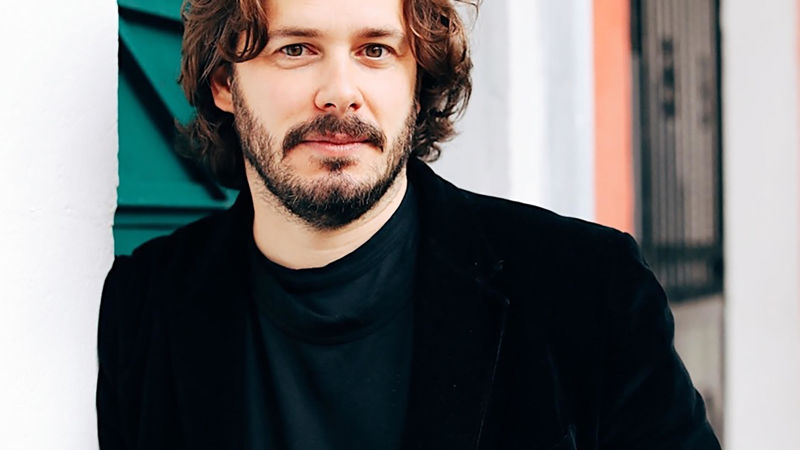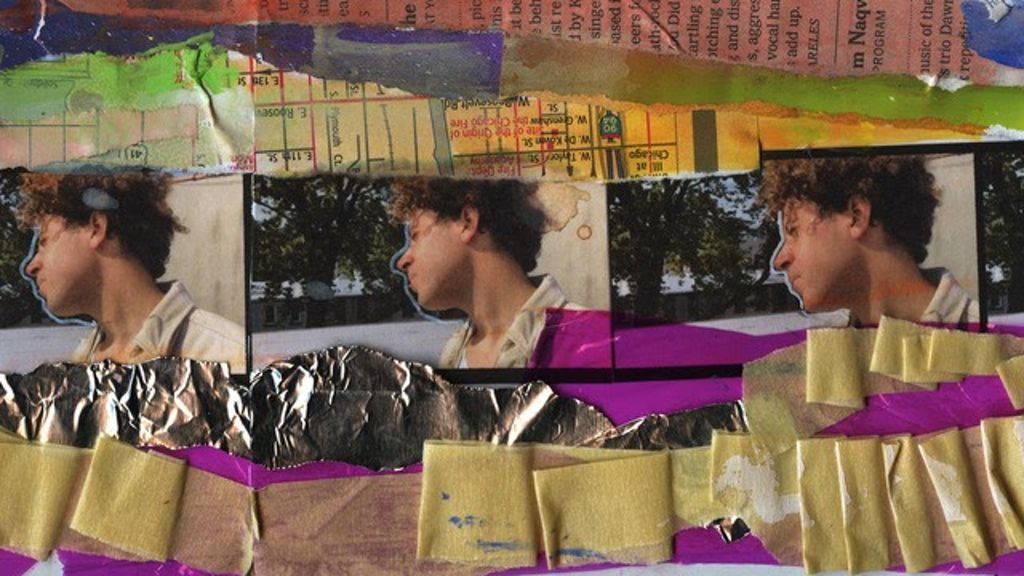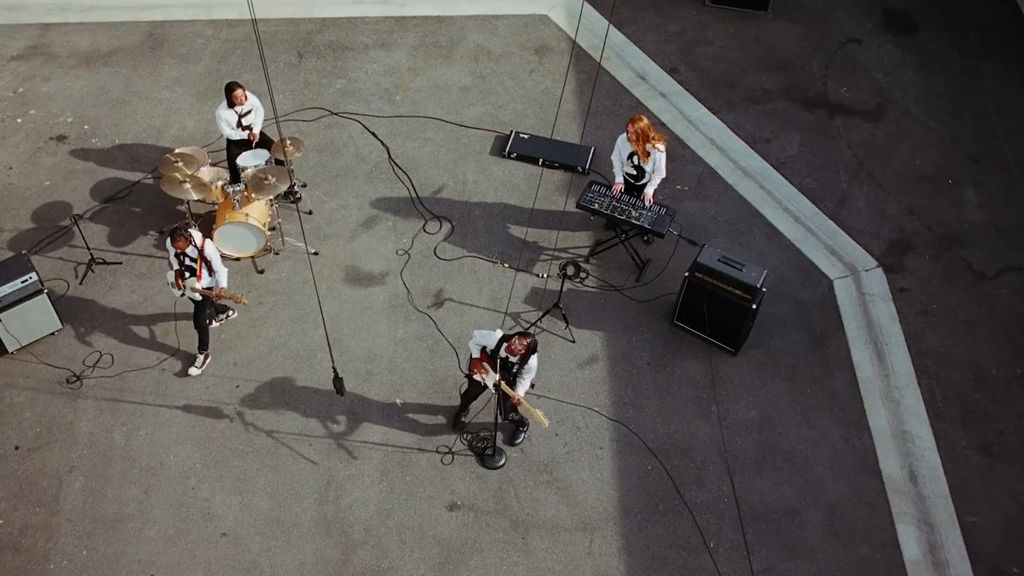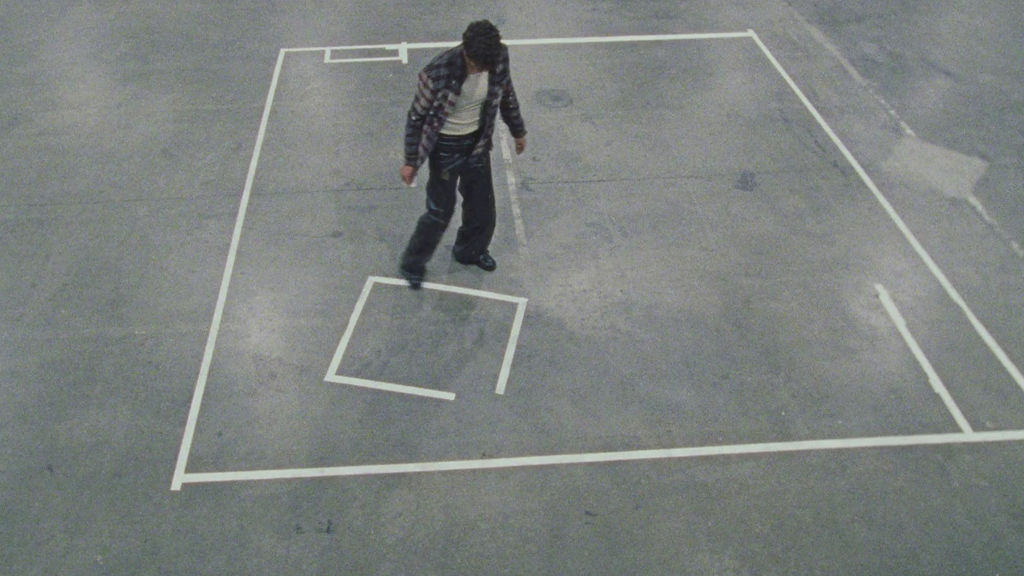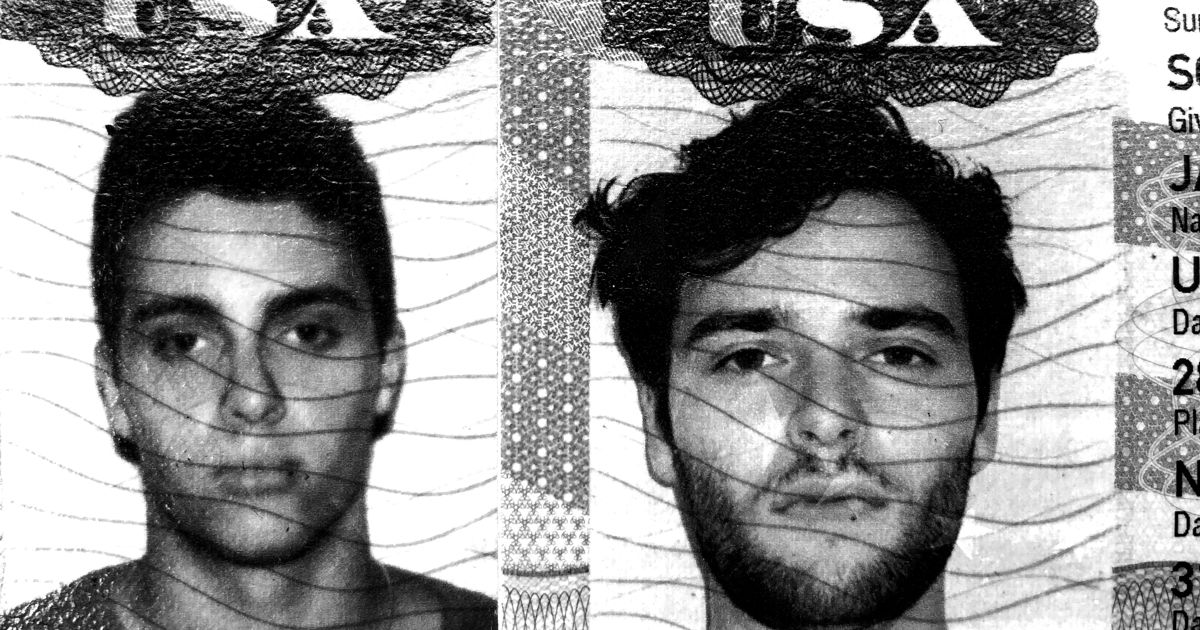Expanding concepts: The flexible world of rubberband.
Stretch it any way you like, you’ll find magic percolating in the work of New York-based SMUGGLER directorial duo rubberband., AKA Jason Sondock and Simon Davis. Here they share with Tim Cumming the processes behind their cinematic storytelling on spots for Reebok, Nowness and Calvin Klein and more, and their artfully choreographed, conceptual music videos for artists including LCD Soundsystem, Goldlink and Steve Lacey.
Jason Sondock and Simon Davis have been working together for six years, becoming rubberband. three years ago, but if there’s one thread linking one project to another in their impressive reels, it’s that they take entirely different approaches in terms of concept, craft, feel and even the equipment they use.
For the alt-R&B Bad Habits singer Steve Lacy, for instance, and his single Mercury, they shot him roaming a caged area in an industrial storage setting, filming in a 360-degree arc and in one single shot. For the Calvin Klein campaign Our Family, featuring Solange, the duo bring a quieter, poetic quality to the shoot, with the singer and a band including Dev Hynes, Kelela, Kindness and Caroline Polachek, seeming to conjure a brand new song out of studio air.
Elsewhere, they use vintage-looking saturated colours, multiple screens with the aspect ratio of old 8mm home movies, and analogue imagery (vintage cameras, reel-to-reels) to add some conceptual contrast to the energy-rich rap of Topaz Jones’ Toothache.
Being uncomfortable in a creative space yields the best outcomes.
As such, they are digital natives unafraid of delving into film-making’s analogue – even archaic – past, often choosing equipment from filmmaking’s pre-digital years that they deem suitable for the mood of a specific shoot – choosing what to shoot with as carefully as they choose their locations, design their sets, guide their talent, nuance the emotional heft, and hone the resulting footage to a conclusion in the editing suite.
Whether it’s constructing a Rube Goldberg [chain reaction-type] machine out of vintage stereo equipment while aping the tone of those tacky 1970s K-Tel hit compilations for LCD Soundsystem, then shooting it on an obsolete piece of kit called a tube camera – specifically for the terrible quality of the image – or covering model Chasity Samone in white paint for the 60-second spot for rapper Goldlink’s album And After That, We Didn’t Talk, rubberband. accentuate feeling and involvement over spectacle, constructing and enclosing a cinematic world that’s embedded in emotion and fuelled by the viewer’s emotive responses.
Just stretch it any way you like….
Credits
powered by
- Agency Client Direct
- Production Company SMUGGLER
- Director rubberband.
-
-
Unlock full credits and more with a Source + shots membership.
Credits
powered by
- Agency Client Direct
- Production Company SMUGGLER
- Director rubberband.
- Executive Producer Patrick Milling-Smith
- Executive Producers Brian Carmody
- Producer Sara Wallace
- Managing Director Fergus Brown
- Production Manager Holland Kemp
- Copywriter rubberband.
- DP Pat Golan
- Production Designer Hans Maharawal
- Editor Armen Harootun
- Colorist Aubrey Woodiwiss
- Composer Jakob Shaw
- Sound Designer & Audio Mixer Raphael Ajuelos
- Executive Creative Director Gorka Sorozabal Gorospe

Credits
powered by
- Agency Client Direct
- Production Company SMUGGLER
- Director rubberband.
- Executive Producer Patrick Milling-Smith
- Executive Producers Brian Carmody
- Producer Sara Wallace
- Managing Director Fergus Brown
- Production Manager Holland Kemp
- Copywriter rubberband.
- DP Pat Golan
- Production Designer Hans Maharawal
- Editor Armen Harootun
- Colorist Aubrey Woodiwiss
- Composer Jakob Shaw
- Sound Designer & Audio Mixer Raphael Ajuelos
- Executive Creative Director Gorka Sorozabal Gorospe
Above: Dry, rubberband.'s shots Award-winning short for Zara.
How and when did you two meet, and what was it that made you decide you wanted to make videos together?
We met during our freshman year of college, at film school at NYU. It was out of necessity that we started to make videos together. Simon’s camera broke and I had a working one. We literally met the night of a scrappy music video shoot, and we’ve been best friends and creative partners ever since, that was nearly 11 years ago.
How did Rubberband. start, and what was the inspiration behind the name?
We were smoking a cigarette outside our apartment junior year of college and Simon turned to me and said, do you wanna be “rubberband”? And I said “Sure.” I think I had the idea for the full stop and lowercase, but Simon just had had the name floating around. Sort of a non origin-origin story.
Where did you grow up, and what were your routes into the world of filmmaking?
I [Jason Sondock] grew up between New York City and Long Island. In the 5th grade I had wanted to be an actor, but I didn’t get the part in the school play. I was crying and a teacher said, essentially, that If I couldn’t take the pain of the audition process, I should just work the lights. So I took that pretty literally. That summer I made some videos that were basically one notch up from shooting with your friends and siblings on your dad’s VHS camcorder. That was the beginning.
We met the night of a scrappy music video shoot, and we’ve been best friends and creative partners ever since.
Simon was making films in high school and always had a strong art background, his mother was a professor of art history in New Jersey. He was very knowledgeable about art and cinema. His youthful collection of DVDs is really impressive: Kurosawa, Tarkovsky, Bergman, Cassavetes. He went to NYFA in high school, we were actually there at the same time and never realised. I think it was in his purview from an early age that this is what he wanted to do.
Credits
powered by
-
- Production Company SMUGGLER
- Director rubberband.
-
-
Unlock full credits and more with a Source + shots membership.
Credits
powered by
- Production Company SMUGGLER
- Director rubberband.

Credits
powered by
- Production Company SMUGGLER
- Director rubberband.
Above: The duo's breakthrough work for Calvin Klein.
When it comes to filmmaking you learnt more by doing than by studying what to do?
Yes. We’ve learned more on a film set than we ever did in class. Filmmaking is a truly physical art form.
Who were/are your creative inspirations?
[Writers] Joan Didion, David Foster Wallace and James Baldwin. [Musicians] Robert Johnson, Bill Evans and Lloyd Clifton Miller. [Artists] Robert Rauschenberg and Donald Judd. [Filmmakers] Gordon Parks, Robert Altman, Garrett Bradley and Kahlil Joseph and [Architect] Tadao Ando.
What were your first projects, and what was your first big success?
Our first projects were music videos for A$AP Twelvyy and a fashion film for Jalil Peraza.
We’ve learned more on a film set than we ever did in class.
I think our first big success was our first Calvin campaign with Solange.
Is there a familiar route to taking on a job – a music artist or a brand – or is every job distinct, with its own ecology and climate?
Every job is completely different. In fact, if a job isn’t different enough, we won’t do it most of the time.
When it comes to working behind the camera, what kind of cameras do you use? Are there times only analogue will do?
A camera is another tool. Like a light stand or anything else.
We prefer analogue filmmaking because it’s yielded the most powerful results for us, but we shoot on digital often. It’s just what’s right for the project.
Lewis Del Mar – TV
Steve Lacy – Sunshine
Omar Apollo – Evergreen
Above: TV for Lewis Del Mar, Sunshine for Steve Lacy, and Evergreen for Omar Apollo; three of the duo's favourite videos.
What have been your favourite music video projects?
TV for Lewis Del Mar, Sunshine for Steve Lacy, and our recent Omar Apollo video for Evergreen.
Our work for LCD Soundsystem isn’t technically a music video but one of the most interesting projects we got to work on.
Our favourite project ever is our film for Topaz, Don’t Go Tellin’ Your Momma. It isn’t a music video but it’s within that canon.
Which has been the most challenging?
Our video for Lucky Daye was perhaps the hardest technical video we’ve ever done.
Credits
powered by
-
- Production Company SMUGGLER
- Director rubberband.
-
-
Unlock full credits and more with a Source + shots membership.
Credits
powered by
- Production Company SMUGGLER
- Director rubberband.
- Production Service Company LFR Productions
- Editor Dylan Edwards
- Editor Taylor Walsh
- Managing Partner Carr Schilling
- Executive Producer Adam Becht
- Post Producer Hope Duhaime
- Executive Producer Brian Carmody
- Executive Producer Elizabeth Doonan
- Executive Producer Patrick Milling-Smith
- Producer Luigi Rossi
- Line Producer Lottie Abrahams
- DP Patrick Golan
- Production Designer Natalia Brito
- Production Designer Miranda Lorenz
- Asst Editor Connie Chuang
- Asst Editor Chris Wronka
- Post Producer Mary Stasilli
- Colorist Aubrey Woodiwiss
- Animator James Siewert
- VFX Artist Dara Hamidi
- VFX Artist Dennis Kang

Credits
powered by
- Production Company SMUGGLER
- Director rubberband.
- Production Service Company LFR Productions
- Editor Dylan Edwards
- Editor Taylor Walsh
- Managing Partner Carr Schilling
- Executive Producer Adam Becht
- Post Producer Hope Duhaime
- Executive Producer Brian Carmody
- Executive Producer Elizabeth Doonan
- Executive Producer Patrick Milling-Smith
- Producer Luigi Rossi
- Line Producer Lottie Abrahams
- DP Patrick Golan
- Production Designer Natalia Brito
- Production Designer Miranda Lorenz
- Asst Editor Connie Chuang
- Asst Editor Chris Wronka
- Post Producer Mary Stasilli
- Colorist Aubrey Woodiwiss
- Animator James Siewert
- VFX Artist Dara Hamidi
- VFX Artist Dennis Kang
Above: N.W.A., the impossibly-complex video for Lucky Daye.
How has the music video world changed since you’ve been rubberband. and what do you think the future holds?
The landscape of music videos is constantly shifting. Budgets, creative, what people believe will speak to culture. No one has answers. We hope that the industry gets more organised, that 20 directors aren’t pitching on the same project, and that the treatments and ideas everyone puts part of their soul into don’t fall into a void of communication.
We genuinely believe anyone can be a filmmaker and work with anyone.
There are a lot of fantastically talented directors making amazing work if the industry would let them. I hope in the future we are looked at as artists in collaboration with the musician, and not just a gun for hire.
What are the most important personal qualities required to do what you do, and to work with the people you do?
We genuinely believe anyone can be a filmmaker and work with anyone. The key is to be less precious about what you put into the world and to make a lot of things. Also, don’t be afraid to take on projects and ideas you don’t know how to do or just know nothing about.
Being uncomfortable in a creative space yields the best outcomes.
)

